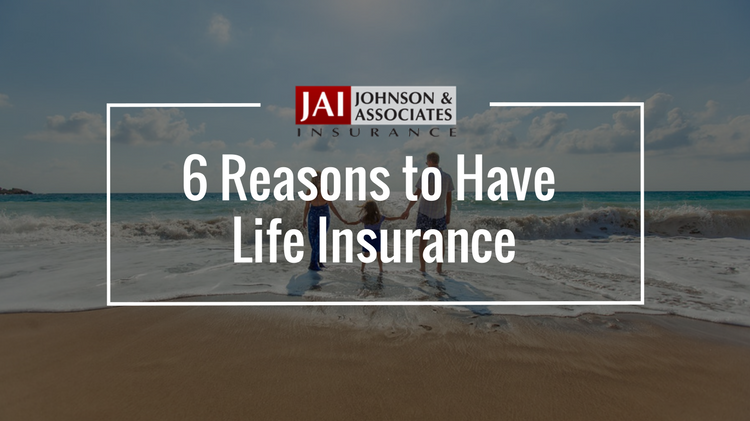
6 Reasons to have Life Insurance
1. To Pay Final Expenses
The cost of a funeral and burial can easily run into the tens of thousands of dollars, and I don’t want my wife, parents, or children to suffer financially in addition to emotionally at my death.
2. To Cover Children’s Expenses
Like most fathers, I want to be sure my kids are well taken care of and can afford a quality college education. For this reason, additional coverage is absolutely essential while my kids are still at home.
3. To Replace the Spouse’s Income
If my wife had passed away while the kids were young, I would’ve needed to replace her income, which was essential to our lifestyle. I also would’ve needed to hire help for domestic tasks we’d shared like cleaning the house, laundry, cooking, helping with schoolwork, and carting kids to doctor’s visits.
4. To Pay Off Debts
In addition to providing income to cover everyday living expenses, my family would need insurance to cover debts like the mortgage so they wouldn’t have to sell the house to stay solvent.
5. To Buy a Business Partner’s Shares
When someone is involved in a business partnership, they need insurance on my partner’s life. The reason is so if he dies, they will have enough cash to buy his interest from his heirs and pay his share of the company’s obligations without having to sell the company itself. He has the same needs (due to the risk that his partner might die), and he simultaneously purchased insurance on the partner’s life as well.
6. To Pay Off Estate Taxes
Estate taxes can be steep, so having insurance in place to pay them is essential to avoid jeopardizing assets or funds built for retirement. Use of insurance for this purpose is most common in large estates, and uses permanent (rather than term) insurance to ensure that coverage remains until the end of life.
How much coverage should you buy?
The face amount, or “death benefit” of an insurance policy (i.e., the amount of proceeds paid to the beneficiary) should be high enough to replace the after-tax income you would have earned had you lived a full life, presuming you can afford the annual premiums for that amount. In other words, the insurance replaces the income you didn’t have the chance to earn by living and working until retirement due to a premature death.
The proper amount of insurance allows your family to continue their lifestyle, even though your income is no longer available. The actual amount that you should purchase depends upon your present and probable future incomes, any special circumstances affecting you or your family, and your existing budget for premiums.
Whole or Term Life Insurance?
Some people prefer to drive Cadillacs or Mercedes, which come with all of the electronic gadgets that make driving safe and as easy as possible. Others prefer less customized makes, equally reliable to their more expensive cousins, but requiring more hands-on attention.
Whole life is the “Cadillac” of insurance; its sponsors try to do everything for you, specifically investing a portion of your premiums so that the annual cost doesn’t increase as you grow older. The investment characteristic of the insurance means that premiums are generally higher than a similar term policy with the same face value. After all, whole life insurance is intended to cover your whole life.
Term insurance, on the other hand, is a stripped-down model of life insurance. There are no excess premiums to be invested, and no promises or guarantees beyond the end of the term, which can range from 1 to 30 years. The annual premium for term insurance is always less than whole life, lacking the investment component, but your premiums will rise (often substantially) once the term period expires.
Both types of life insurance policies (or one of their derivatives) have benefits and drawbacks; both have their place depending upon the needs, desires, and financial objectives of the purchaser. A knowledgeable professional insurance agent can help you decide which type of policy is best for you depending upon your circumstances. But whichever you select, be sure that you have enough coverage to meet your objectives in the short term and the long term.
